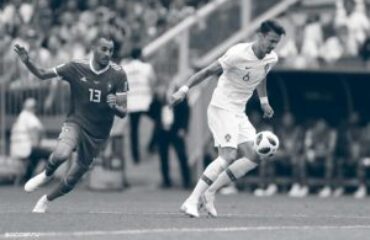1. The prognostic value of the hamstring outcome score to predict the risk of hamstring injuries.
van de Hoef PA, Brink MS, van der Horst N, van Smeden M, Backx FJG.
Analysis of data of 356 amateur soccer players showed that the hamstring outcome score (HaOS) questionary is associated both with the number of previous hamstring injuries and the probability of sustaining new hamstring injuries in these players.
J Sci Med Sport. 2021 Jan 16:S1440-2440(21)00001-3. doi: 10.1016/j.jsams.2021.01.001
2. Injury prevention effects of stretching exercise intervention by physical therapists in male high school soccer players.
Azuma N, Someya F.
A randomized controlled trial with 124 players from two high school soccer teams, divided into intervention (with a 12-week stretching intervention by physical therapists) and control groups (without the intervention), showed that injuries were significantly lower in the group with intervention during the 40-week observation period, along with significant improvements in heel-buttock distance, straight leg-raise, hip rotation angles, and ankle dorsiflexion angles.
Scand J Med Sci Sports. 2020 Nov;30(11):2178-2192. doi: 10.1111/sms.13777
3. Associations of Body Composition, Maximum Strength, Power Characteristics with Sprinting, Jumping, and Intermittent Endurance Performance in Male Intercollegiate Soccer Players.
Ishida A, Travis SK, Stone MH.
Analysis of 23 collegiate soccer players showed significant correlations between lean body mass and CMJ performance with sprint times at 10 m and 20 m, reflecting that body composition and power characteristics are directly related to soccer-related performance.
J Funct Morphol Kinesiol. 2021 Jan 7;6(1):E7. doi: 10.3390/jfmk6010007
4. Segmental coordination and variability of change in direction in long-standing groin pain.
Mansourizadeh R, Letafatkar A, Franklyn-Miller A, Khaleghi-Tazji M, Baker JS.
Analysis of multiple ipsilateral turns at a self-selected pace from 16 males with Long-standing groin pain (LSGP) against 16 asymptomatic controls showed more out-of-phase movement with both increased variabilities in right/ left thigh – pelvic coupling, right/ left thigh-thoracic, pelvic- thoracic, and in the decoupling of segmental coordination, reflecting a decrease in coordination with higher variability in subjects with LSGP, leading to unexpected compensatory strategies and control impairments.
Gait Posture. 2020 Mar;77:36-42. doi: 10.1016/j.gaitpost.2020.01.013





